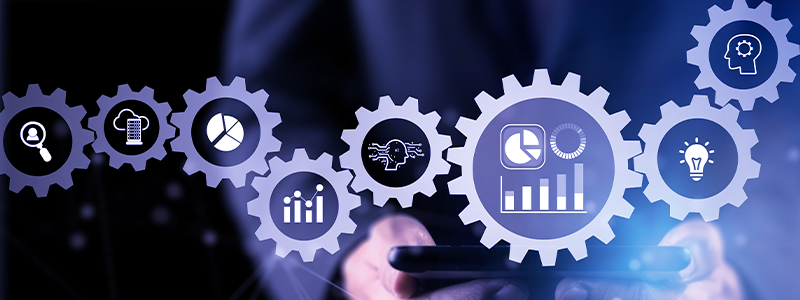EDI file communication methods have emerged as a cornerstone of modern business operations, enabling trading partners to efficiently exchange documents like purchase orders, invoices, and shipping notices. By embracing various communication methods, from traditional Value-Added Networks (VANs) to contemporary options like AS2, FTP, and Direct Connection, organizations can leverage the benefits of EDI while considering each method’s unique advantages and considerations.
Exploring Different EDI File Communication Methods
When it comes to EDI, several communication methods are available that facilitate the exchange of vital business documents between trading partners. These methods each offer distinct features and advantages, allowing organizations to select the most suitable option for their specific needs. Let’s explore some of the commonly used EDI communication methods:
Value-Added Network (VAN)
One popular EDI communication method is a Value-Added Network (VAN), which acts as a secure intermediary between trading partners. The VAN operates on a many-to-many architecture, connecting multiple suppliers, retailers, carriers, banks, and other stakeholders to a public platform hosted by the EDI supplier. A VAN provides a reliable and efficient communication channel, taking care of exchanging EDI documents, monitoring traffic, and managing data integrity. By leveraging a VAN, businesses can ensure efficient and secure data transmission without the need for complex infrastructure.
Moreover, VANs offer additional value-added services like data translation, format validation, and message tracking, simplifying the EDI process as a whole. They also provide a centralized platform for managing trading partner relationships, enabling businesses to easily onboard new partners and streamline communication.
Pros:
- Simplified Trading Partner Management: VANs provide a managed solution for onboarding and managing trading partners. They act as a central hub, enabling businesses to establish connections with multiple partners through a single interface. This streamlines the process of exchanging EDI documents and reduces the complexity of managing individual partner connections.
- Extensive Trading Partner Network: VANs have an established network of trading partners, making it easier for businesses to connect with a wide range of companies. This eliminates the need for businesses to individually establish and maintain connections with each trading partner, saving both time and effort.
- Enhanced Security: VANs prioritize data security by implementing robust measures such as encryption and digital signatures. These security features protect the integrity and confidentiality of the exchanged EDI documents, ensuring that sensitive business information remains secure during transmission.
Cons:
- Additional Costs: Utilizing a VAN involves certain costs (such as recurring fees) based on usage and the number of trading partners. These expenses can vary depending on the volume of data exchanged and the complexity of the trading partner network. It is important for businesses to consider these costs when evaluating the overall value of using a VAN.
- Dependency on a Third-Party: Businesses must entrust their EDI communication to a third-party service provider when relying on a VAN. This introduces a level of dependency, which brings about potential risks associated with relying on an external entity for critical business processes. Choosing a reputable VAN provider with a strong track record in terms of reliability and security is crucial.

Applicability Statement 2 (AS2)
AS2 is another widely used EDI file communication method that enables direct online communication between trading partners. It utilizes digital certificates and encryption technology to ensure the confidentiality and integrity of data during transmission. AS2 offers real-time communication, making it suitable for time-sensitive transactions. Additionally, it supports non-repudiation, meaning that both parties can be confident that the data originated from the listed source.
AS2 leverages the HTTP or HTTPS protocol for communication, which is compatible with existing internet infrastructure. It also provides message integrity checks and verification receipts, ensuring that data is not tampered with during transmission.
Pros:
- Direct and Real-Time Communication: AS2 enables direct online communication between trading partners, allowing for real-time data exchange. This is particularly beneficial for time-sensitive transactions, such as order fulfillment or inventory management.
- Robust Security Features: AS2 employs encryption and digital signatures to ensure the transmitted data’s confidentiality, integrity, and authenticity. It provides a secure channel for document exchange, protecting sensitive business information from unauthorized access and tampering.
- Elimination of Third-Party Intermediaries: AS2 eliminates the need for a Value-Added Network (VAN) or other intermediaries, reducing costs and streamlining communication. Direct point-to-point connectivity fosters a more efficient and streamlined exchange of documents between trading partners.
Cons:
- Technical Expertise and Resource Requirements: Implementing and managing AS2 requires technical expertise and resources. Organizations must have the necessary IT infrastructure including hardware, software, and personnel to effectively set up and maintain AS2 connections.
- Initial Investment: There may be an initial investment in hardware, software, and network infrastructure to establish AS2 capabilities within an organization. This cost should be considered when evaluating the feasibility of implementing AS2.

File Transfer Protocol (FTP)
FTP is a standard network protocol used for transferring files over the internet. Although not specifically designed for EDI, many businesses leverage FTP for EDI file communication due to its simplicity and cost-effectiveness. FTP allows for exchanging EDI documents between trading partners, but it lacks inherent security features such as encryption and message integrity checks.
Pros:
- Cost-effective: FTP is a widely available protocol that often comes at a lower cost than specialized EDI communication methods.
- Easy implementation and usage: FTP is relatively simple to set up and use, making it accessible to businesses without complex technical requirements.
Cons:
- Limited security features: One of the main drawbacks of FTP for EDI communication is the lack of inherent security features. FTP does not provide encryption or message integrity checks by default, which can pose a risk when transmitting sensitive data.
- Scalability and maintenance: FTP may have limitations in terms of scalability, especially for large volumes of data. Additionally, ongoing maintenance and management of FTP servers may require additional resources and expertise.

Direct Connection
Direct connection refers to a direct link established between trading partners without intermediaries. It offers high control and flexibility, as both parties have complete ownership over the communication process. Direct connection can be established using various protocols, such as AS2 or secure VPN (Virtual Private Network) connections. It is particularly suitable for businesses that require extensive customization or specific security requirements.
Pros:
- Enhanced Security: With a direct connection, businesses have complete control over the security measures implemented for data transmission. They can establish robust encryption protocols, strict access controls, and other security measures tailored to their specific requirements. This ensures the confidentiality and integrity of sensitive business documents.
- Greater Flexibility: Direct connection allows businesses to have more flexibility in managing their trading partner relationships. They can establish direct connections with specific partners, enabling efficient and streamlined communication. This flexibility is particularly beneficial for organizations that have complex or customized requirements.
Cons:
- Technical Expertise and Resources: Setting up and maintaining a direct connection requires technical expertise and resources. Businesses must invest in hardware, software, and network infrastructure to effectively establish and manage the connection. This may require dedicated IT staff or the assistance of external experts.
- Initial Investment: Direct connection may involve an initial investment in terms of hardware, software, and infrastructure setup. This cost should be evaluated against the potential benefits and long-term savings that can be achieved through a direct and secure EDI communication channel.

Choosing the Right EDI File Communication Method
When it comes to choosing the right EDI communication method for your business, several factors need to be considered. These factors include:
- Technical Capabilities: Assess the organization’s IT infrastructure and technical expertise. Methods like AS2 or direct connection require more technical resources, while VAN or FTP are simpler options.
- Level of Security: Determine the security requirements based on the data exchange sensitivity. VAN and AS2 offer strong security features, while FTP lacks any inherent security. Direct connection provides control but requires additional measures.
- Complexity of Trading Partner Network: A managed solution like VAN simplifies onboarding and management if a large and diverse network exists. AS2 or direct connection offer control for smaller, defined networks.
- Cost Implications: Evaluate the costs involved. VAN entails recurring fees, AS2 and direct connection require initial investments but offer long-term savings, and FTP is generally the most cost-effective option.
- Scalability and Ongoing Maintenance: Consider future growth and changes in the trading partner network. VAN and managed solutions handle scalability and maintenance well. AS2 and direct connection offer good scalability but require additional resources. FTP may have limitations and maintenance needs.
Conclusion
Advancements in technology are revolutionizing EDI communication, making it more accessible and efficient than ever before. Web-based portals, mobile applications, and API integrations enable seamless data exchange between trading partners, regardless of their locations or system capabilities. As technology continues to evolve, further enhancements in data security, real-time tracking, and analytics are expected, which will only broaden the horizons of what EDI can accomplish.
EDI communication methods – VAN, AS2, FTP, and Direct Connection – provide businesses with efficient and secure means to exchange electronic documents with their trading partners. Each method has its strengths and weaknesses, and the choice depends on each organization’s needs. By understanding the available options and evaluating business needs, organizations can make informed decisions that ensure seamless and streamlined EDI communication. Embrace the power of EDI communication and advance into the digital era!
Learn more about how Astera can help.
Authors:
 Abeeha Jaffery
Abeeha Jaffery









